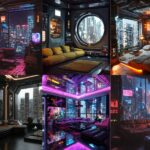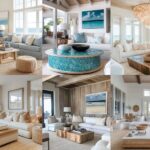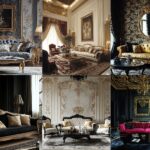Imagine walking into a home where the lights adjust to your mood, the thermostat learns your preferences, and every device seamlessly integrates into your daily routine. High-tech interior design isn’t just about adding gadgets; it’s about creating a harmonious living environment that anticipates your needs and enhances your lifestyle.
You’re probably wondering how to transform your space without overwhelming it with technology. The key lies in blending functionality with aesthetics, ensuring each piece serves a purpose while complementing the overall design.
Whether you’re renovating or starting from scratch, high-tech interior design offers innovative solutions that make life more convenient and stylish. Let’s explore how you can turn any room into a smart, sophisticated sanctuary.
18 High-Tech Interior Design Ideas And Styles
#1. High-tech Walk-in Closet

#2. High-tech Walk-in Closet Interior Design
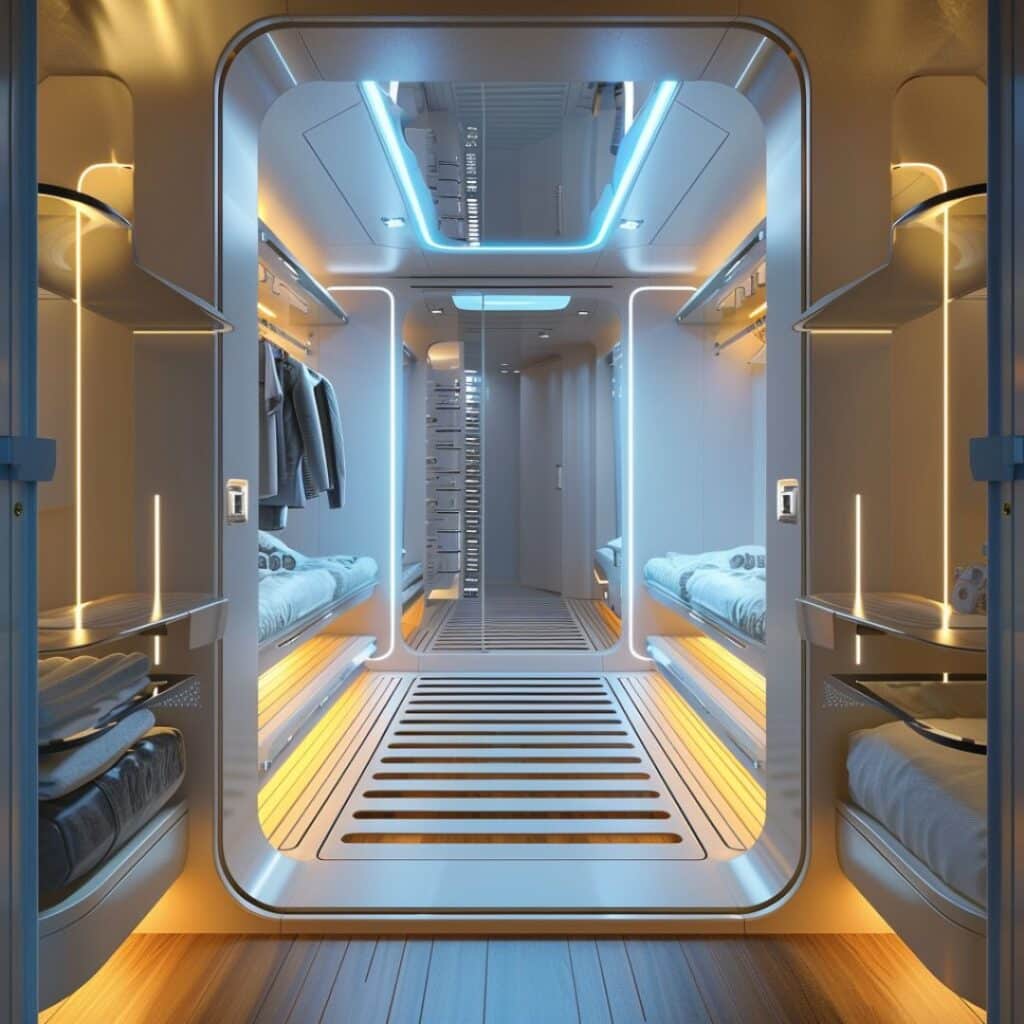
#3. High-tech Studio Apartment
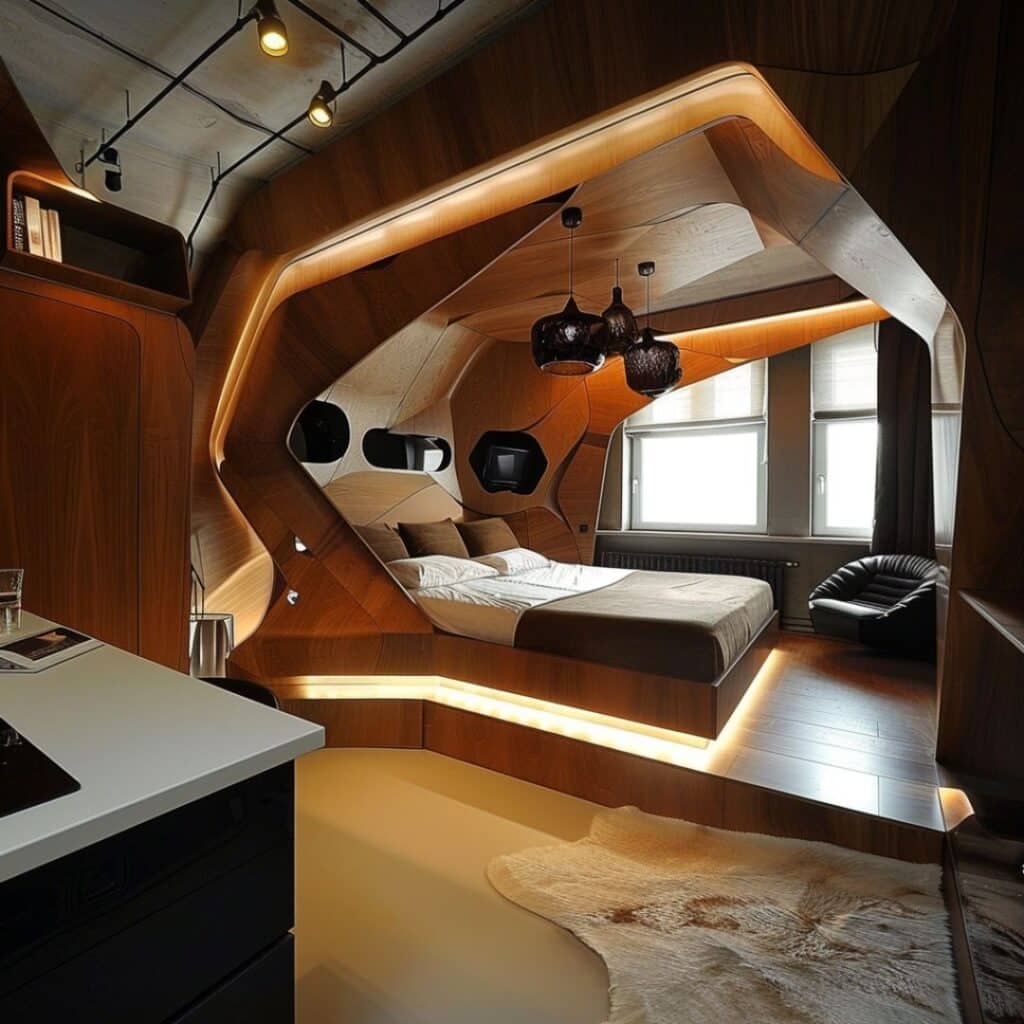
#4. High-tech Studio Apartment Idea
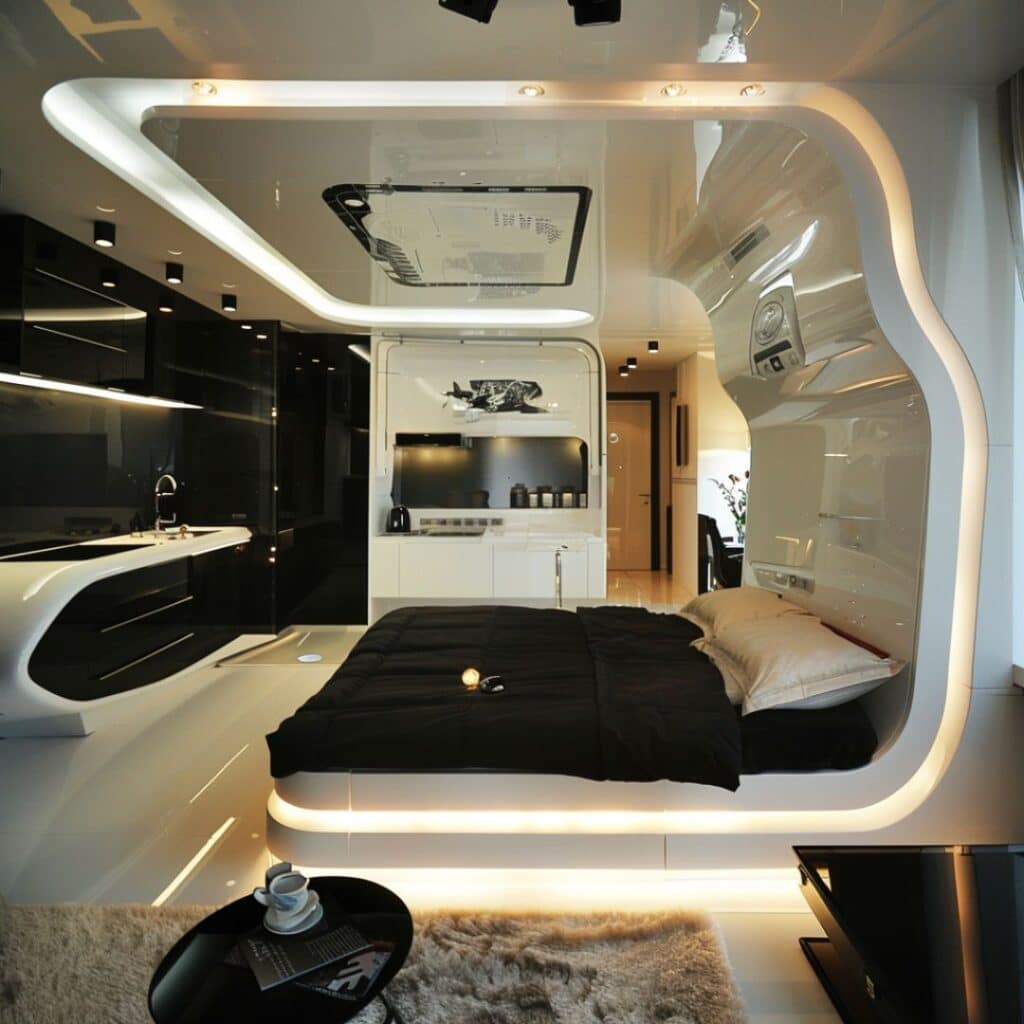
#5. High-tech Open Kitchen Living Room
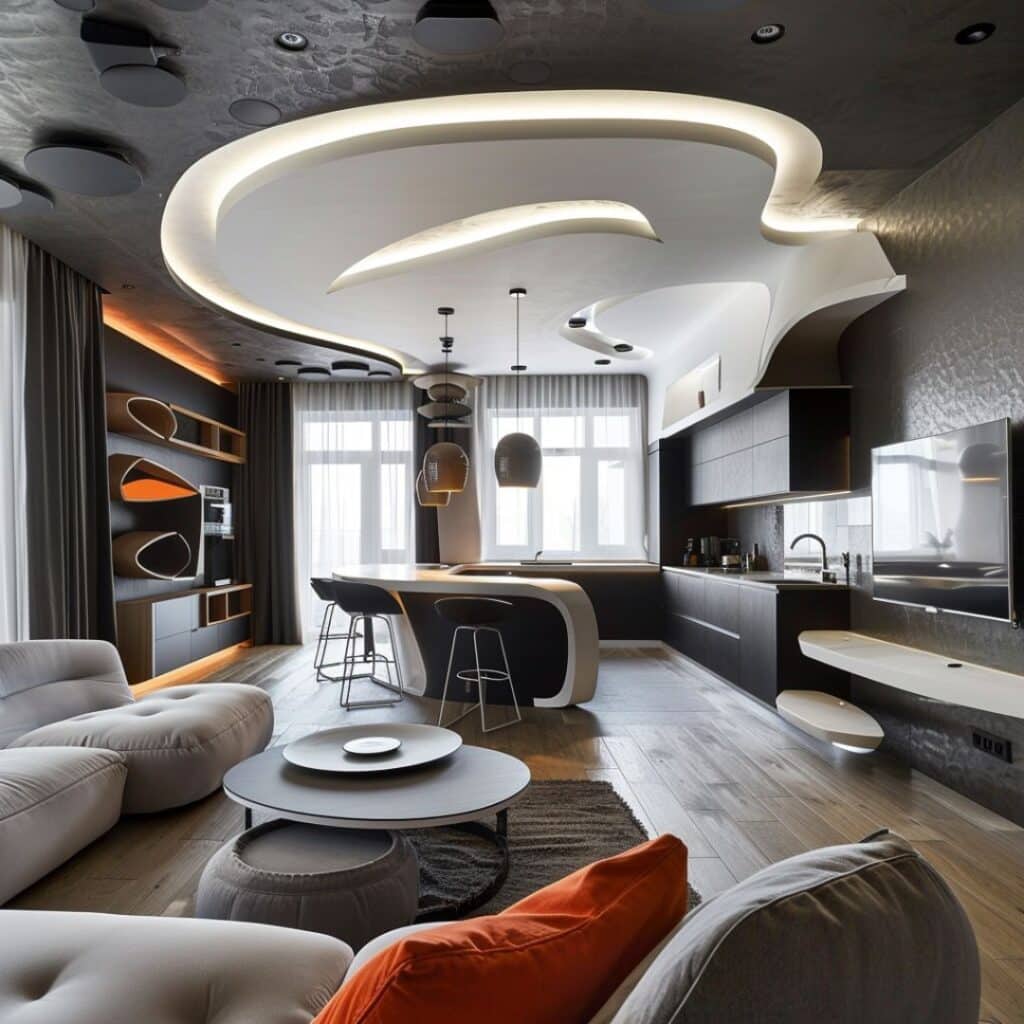
#6. High-tech Open Kitchen Living Room Idea
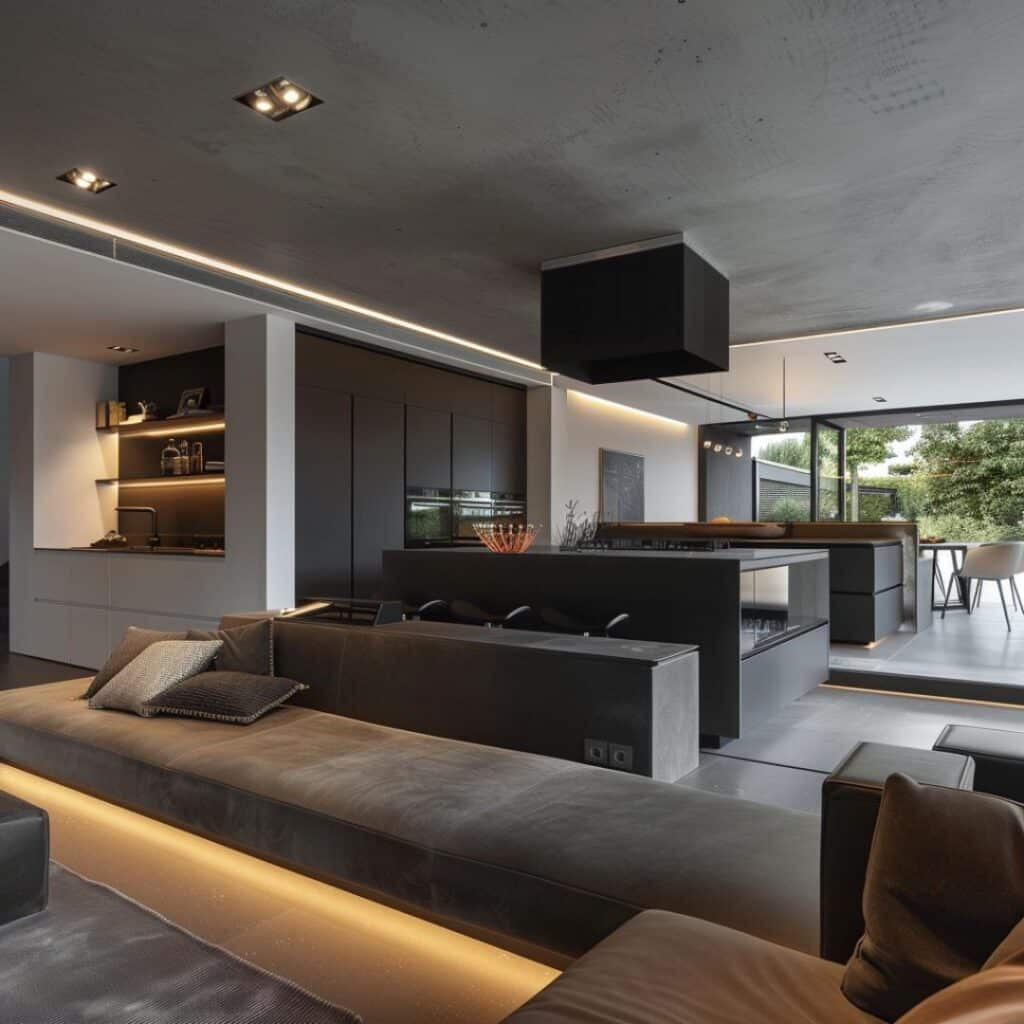
#7. High-tech Living Room
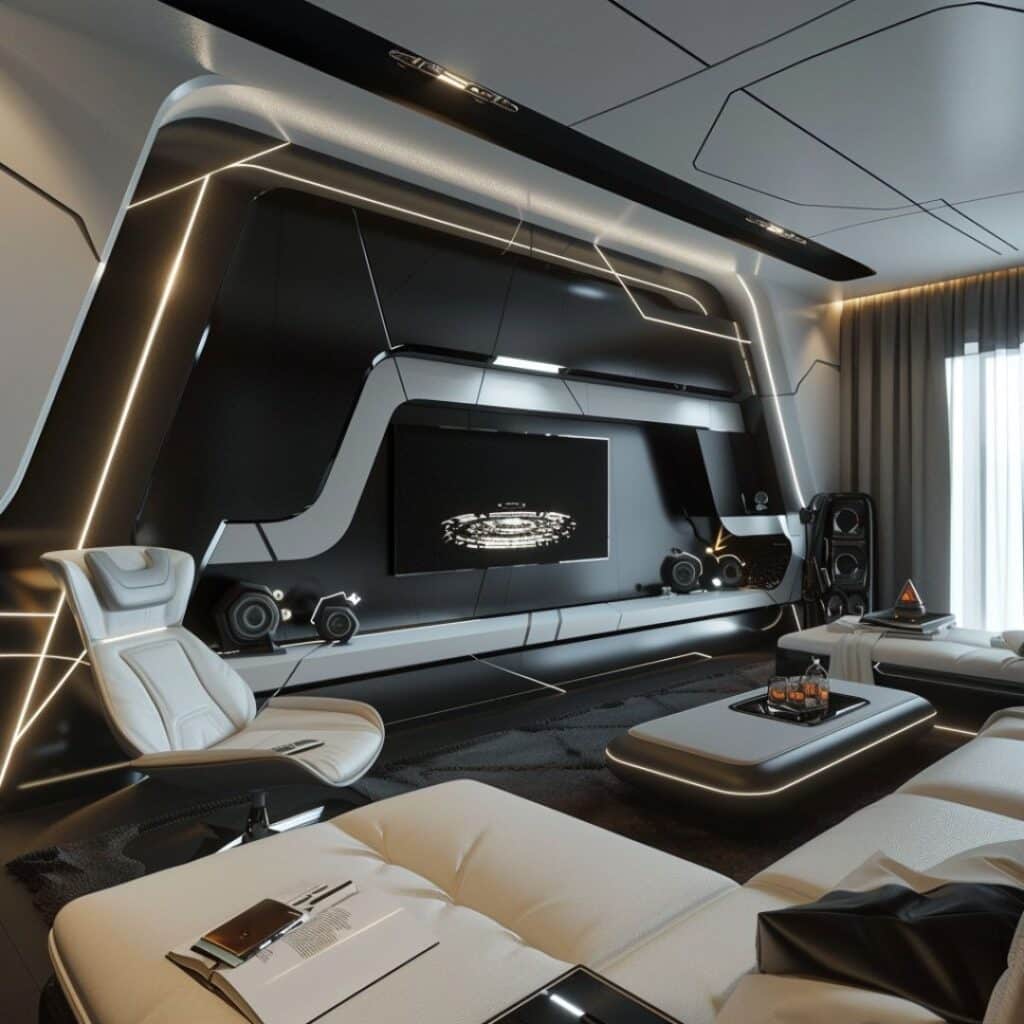
#8. High-tech Living Room Interior Idea
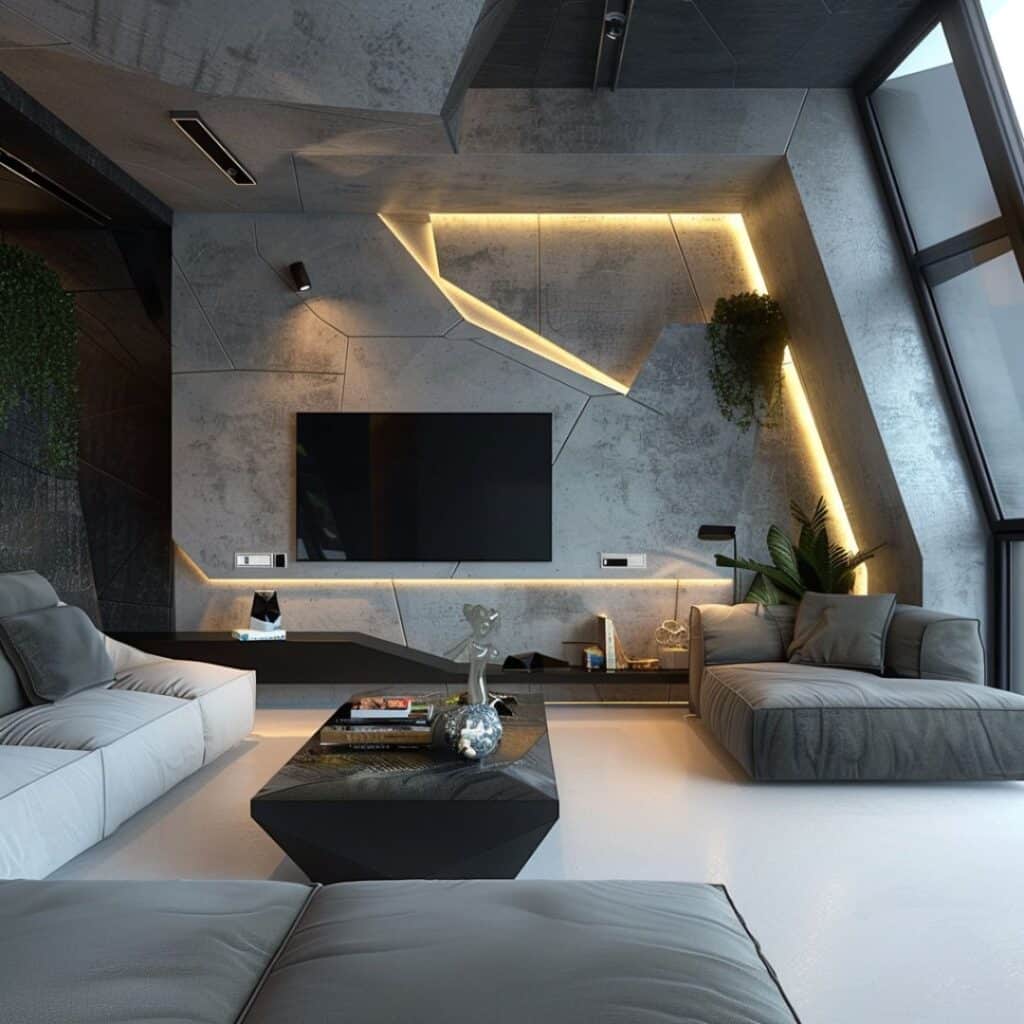
#9. High-tech Laundry Room
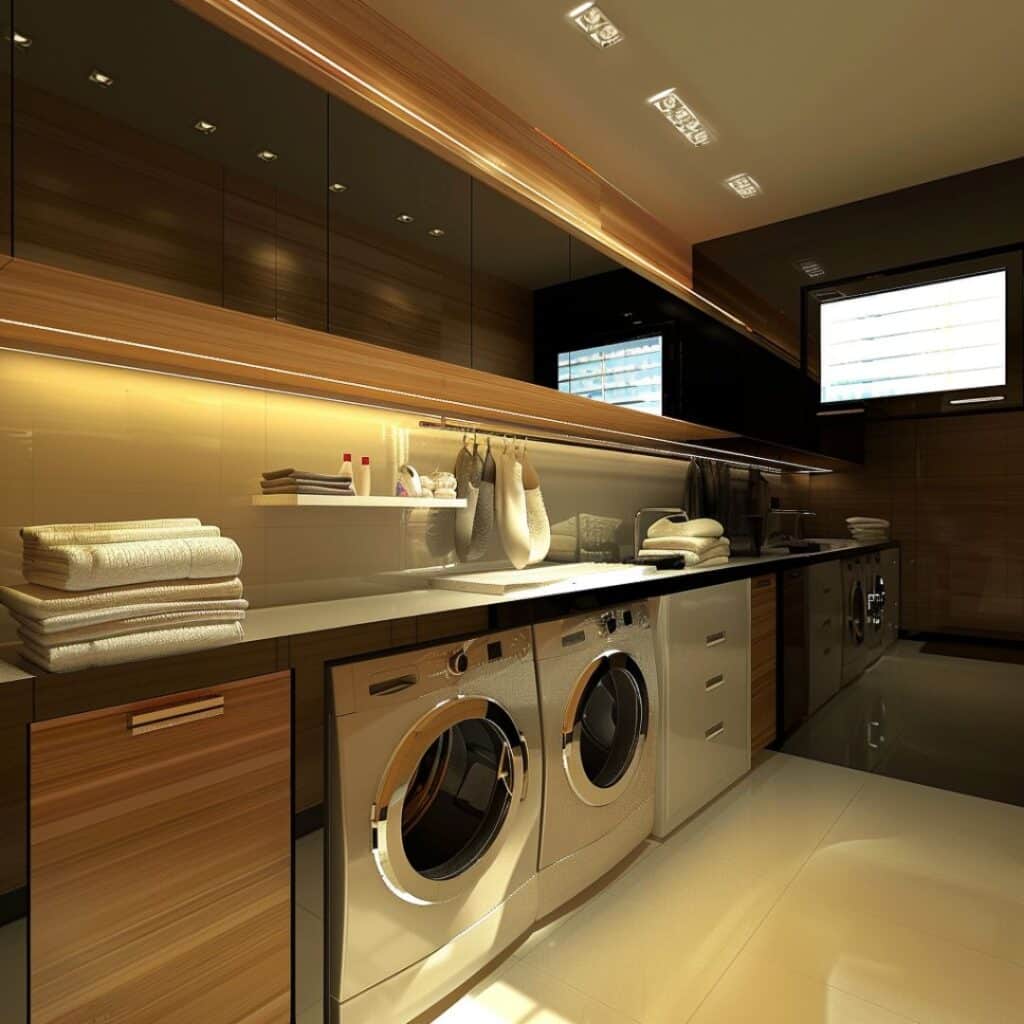
#10. High-tech Kitchen
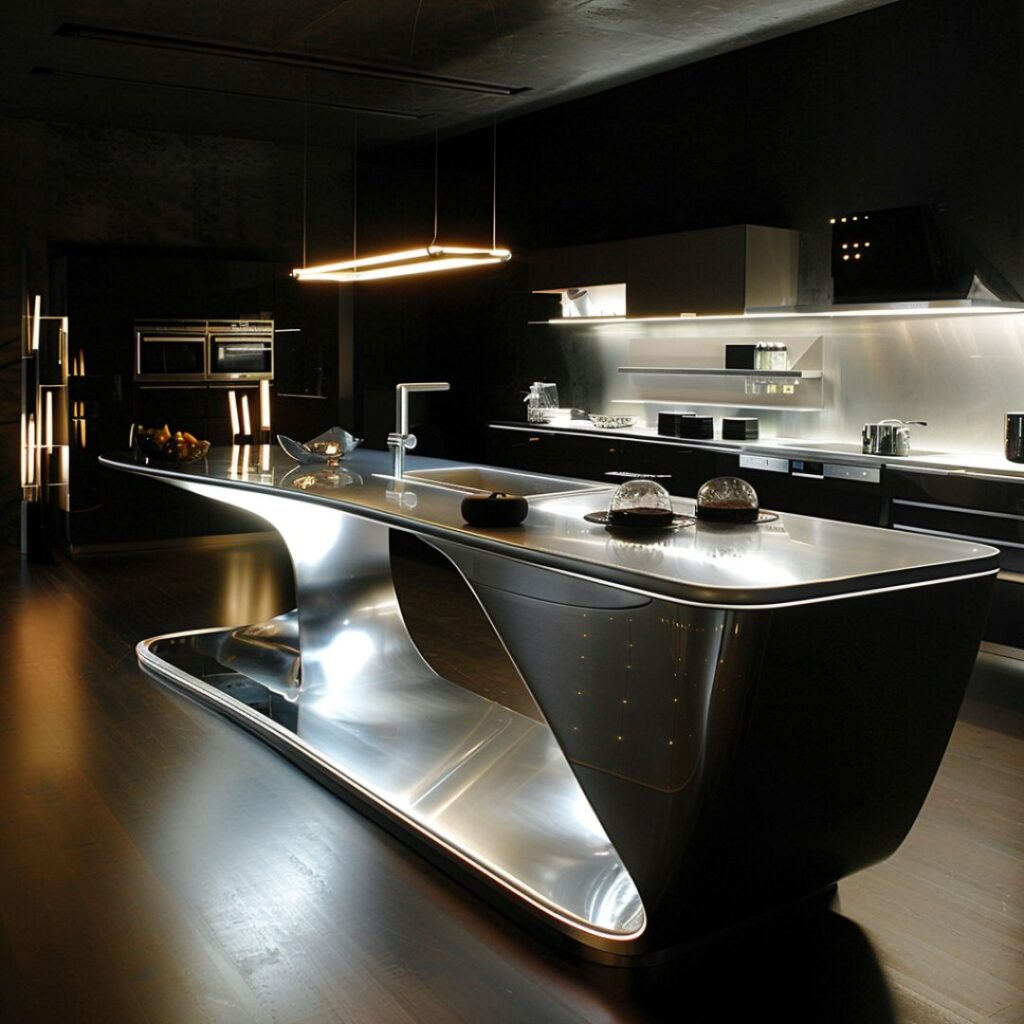
#11. High-tech Kids Room
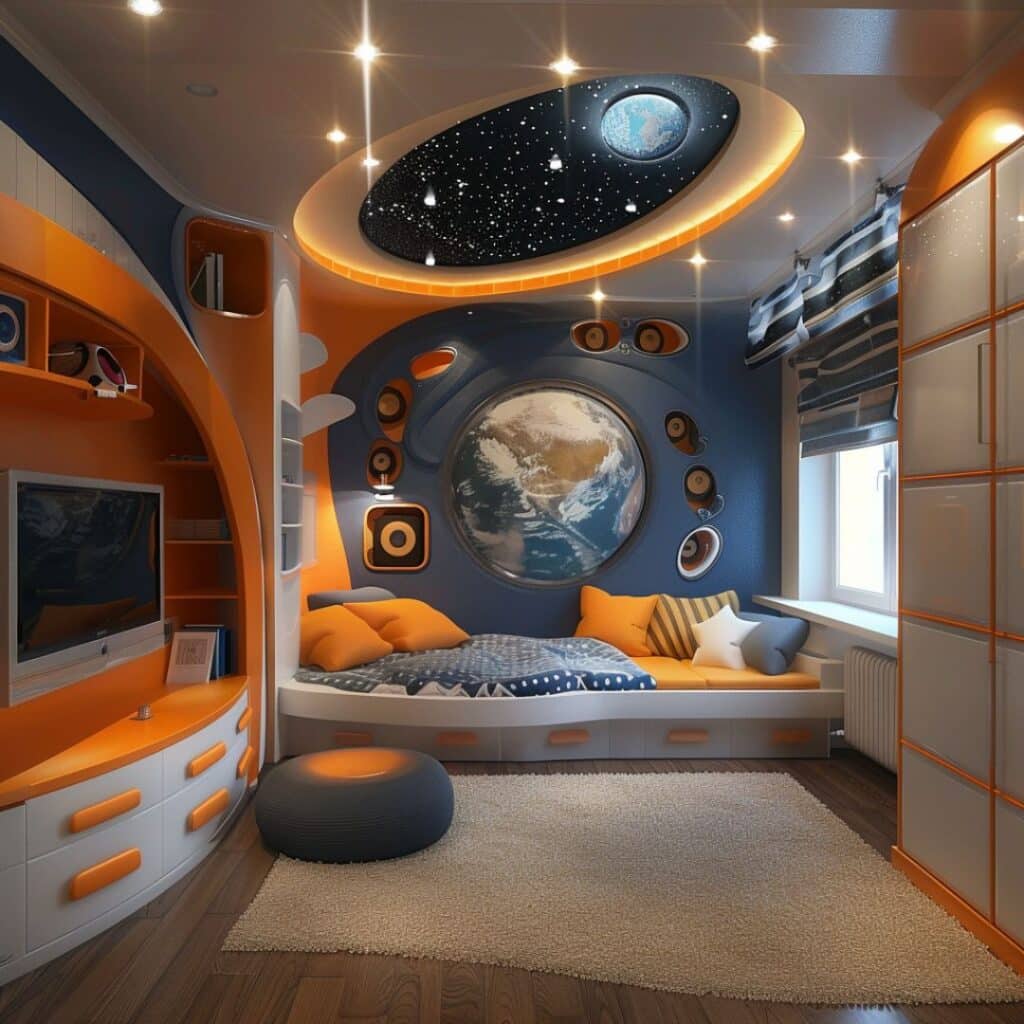
#12. High-tech Home Office
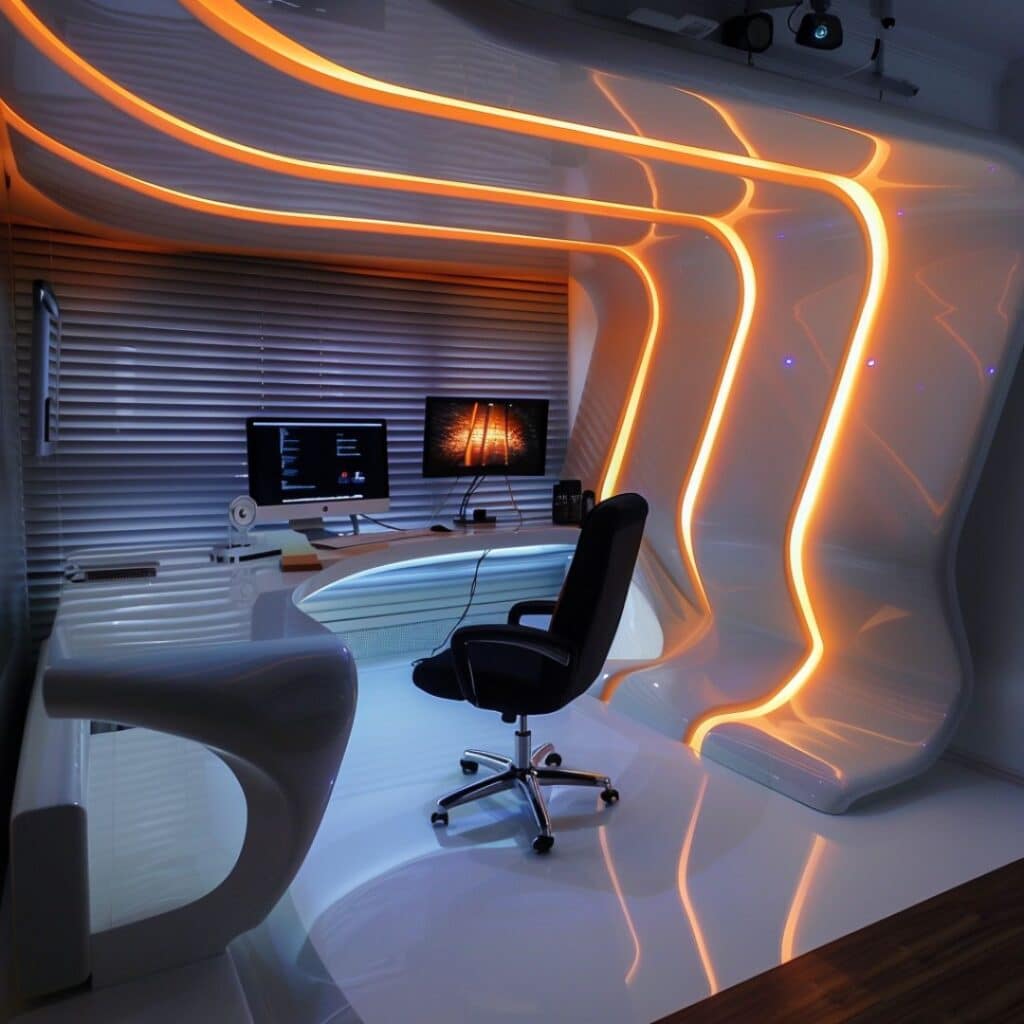
#13. High-tech Guest Bedroom
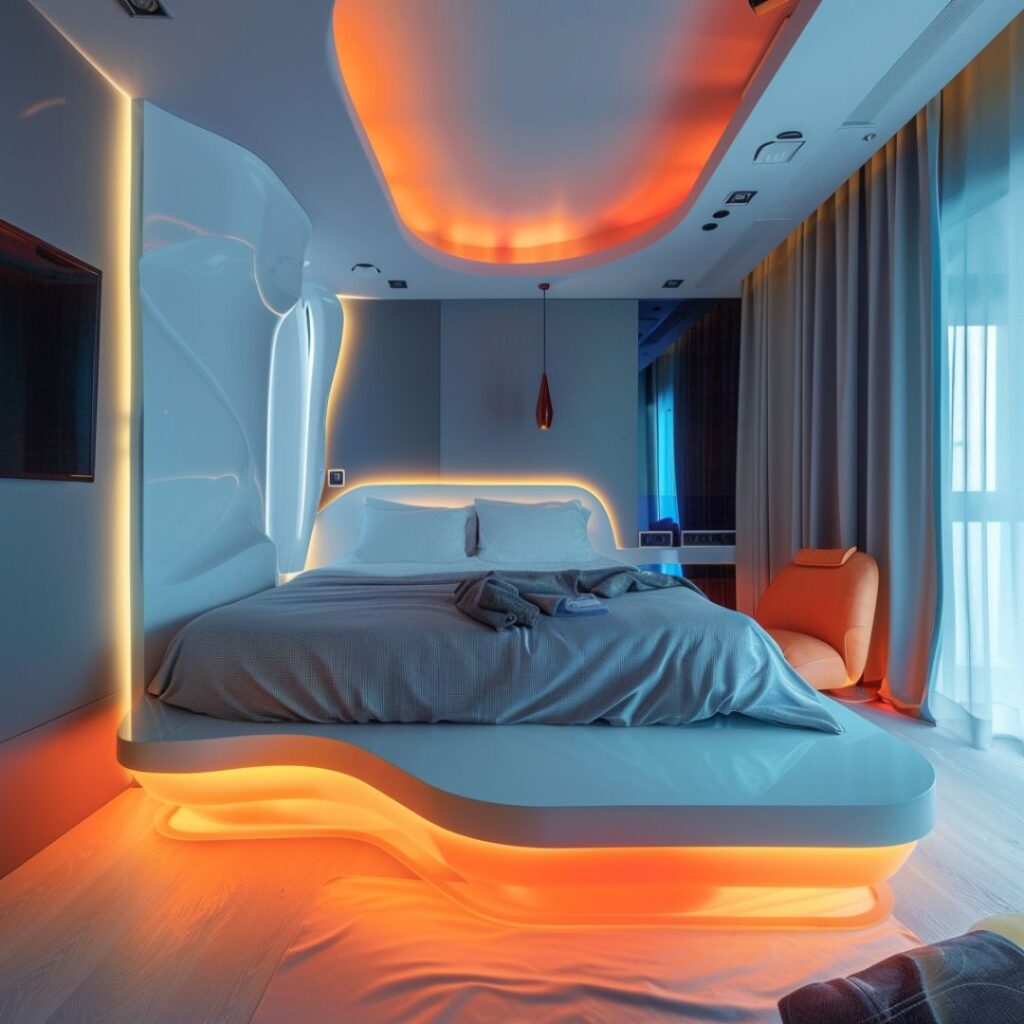
#14. High-tech Guest Bedroom Interior Design

#15. High-tech Dining Room

#16. High-tech Dining Room Interior Design

#17. High-tech Bedroom

#18. High-tech Bedroom Interior Design
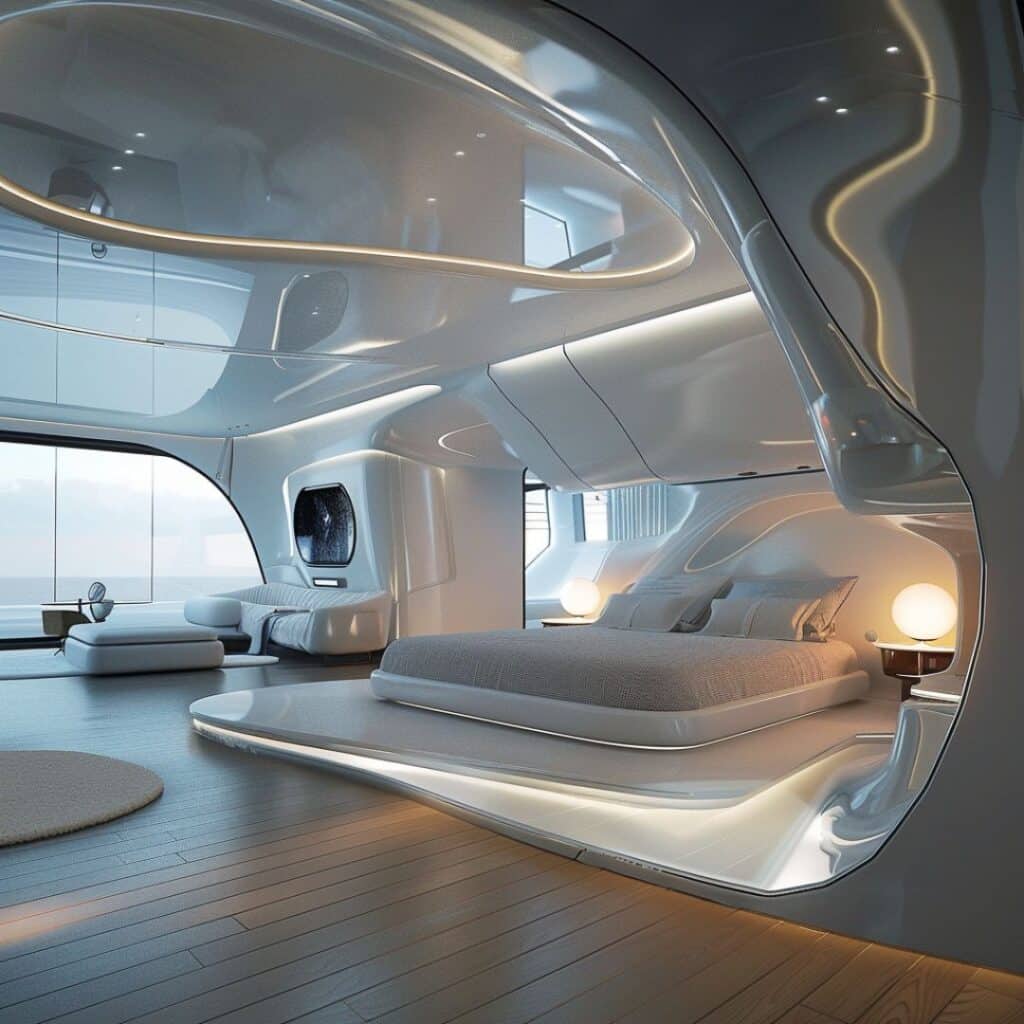
Exploring High-Tech Interior Design
High-tech interior design integrates advanced technology with modern aesthetics, sometimes drawing inspiration from themes like Cyberpunk interior design. This approach transforms living spaces into intelligent environments, blending sleek, futuristic elements with cutting-edge functionality.
What Is High-Tech Interior Design?
High-tech interior design incorporates smart devices and innovative materials. It prioritizes functionality while maintaining a sleek appearance. Examples include automated lighting systems, integrated home theaters, and smart thermostats.
Evolution and Trends in High-Tech Design
The evolution of high-tech design has seen rapid advancements in recent years. Initially focused on simple automation, it now includes AI-driven solutions and IoT integrations. Current trends favor minimalistic designs with hidden tech elements like voice-activated assistants, wireless charging stations, and adaptive furniture that adjusts to user needs.
Incorporating Smart Lighting Systems
Smart lighting systems improve both convenience and energy efficiency. These systems allow you to control light intensity and color through mobile apps or voice commands. Examples include Philips Hue bulbs and Lutron Caseta switches.
Integrating Home Automation Solutions
Home automation enhances the functionality of your living space by connecting various devices into a cohesive system. Popular solutions include Amazon Alexa for voice control, Nest thermostats for climate management, and Ring doorbells for security monitoring.
Utilizing Advanced Materials
Advanced materials contribute to the aesthetic appeal of high-tech interiors. Options range from self-healing paint to sound-absorbing panels that improve room acoustics. Using these materials enhances both form and function within your home environment.
By incorporating these elements thoughtfully, you can create a sophisticated living space that meets your modern lifestyle needs.
Key Features of High-Tech Interior Design
High-tech interior design combines advanced technology with modern aesthetics, often drawing inspiration from Futuristic interior design. It emphasizes both functionality and style, creating spaces that feel ahead of their time.
Advanced Materials and Textures
New materials elevate high-tech interiors. Self-healing paint repairs minor scratches, maintaining a flawless look over time. Sound-absorbing panels reduce noise, creating a serene environment.
Textures play a critical role too. Metal finishes add sleekness while glass elements enhance light flow in spaces.
Smart Home Technologies
Smart tech integrates seamlessly into high-tech homes. Voice-controlled systems manage lighting, temperature, and security effortlessly. Sensors adjust settings based on your preferences, providing comfort without any manual effort.
Automation extends to daily tasks as well. Smart appliances simplify cooking and cleaning routines, making home life more efficient and enjoyable.
Benefits of High-Tech Interior Design
Convenience and Efficiency
High-tech designs improve daily life. Automated systems manage lighting, temperature, and security effortlessly. Voice-activated assistants simplify tasks like controlling appliances or setting reminders.
Smart furniture maximizes space usage. Adjustable desks and modular sofas adapt to different needs, making homes more versatile. Energy-efficient solutions reduce costs and environmental impact.
Enhancing Aesthetic Appeal
High-tech interiors blend sleek design with functionality. Minimalistic aesthetics dominate, with hidden tech elements maintaining a clean look. Integrated lighting systems create ambiance tailored to any mood or occasion.
Advanced materials elevate visual appeal. Self-healing paint keeps walls looking fresh, while sound-absorbing panels enhance acoustic comfort without compromising style.
Challenges in High-Tech Interior Design
High-tech interior design integrates technology with modern living spaces. Yet, it presents several challenges that require careful consideration.
Cost Considerations
Implementing high-tech interiors demands substantial investment. Advanced materials and smart home systems often come at a premium price. Additionally, ongoing maintenance and updates can add to the overall expenditure.
Integration with Existing Structures
Blending new technologies into older buildings poses significant difficulties. Retrofitting smart devices into traditional structures may well necessitate extensive modifications. Ensuring compatibility between old and new systems can be complex, requiring specialized knowledge and equipment.
These hurdles highlight the intricate balance required to achieve a seamless high-tech interior design while managing costs and structural limitations effectively.


